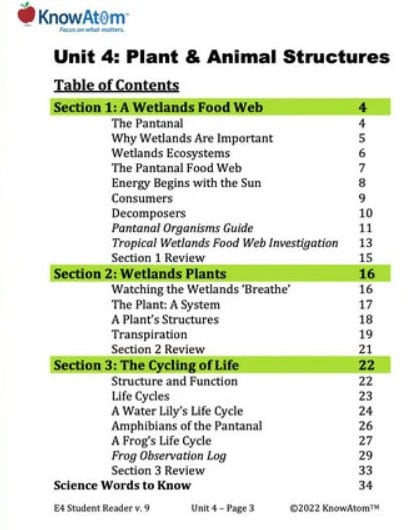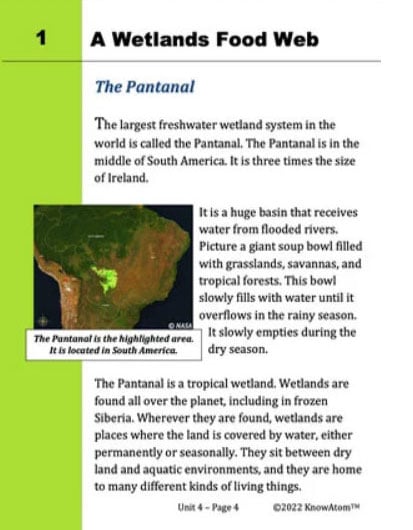A Plant’s Structures
All plants have roots. The roots help to anchor the plant against the forces of wind and moving water. The roots also keep the plant upright and balanced. They also gather water and nutrients and transport them to the rest of the plant.
The stem supports the leaves, fruits, and flowers. It also transports water and nutrients between the roots and the rest of the plant. The stem also absorbs some water, although not as much as the roots.
The leaves have the most chloroplasts, to help create food for the plant through photosynthesis.
Transpiration
Leaves also have structures that allow them to take in carbon dioxide from the environment and release oxygen. Plants are constantly exchanging gasses, in the same way that people are always breathing. To do this, they have pores called stomata that open and close to take in the gasses.
When the stomata are open, some water evaporates back into the environment through transpiration. After plants absorb precipitation from the ground through their roots and the stem carries it to the leaves, some of the water evaporates back to the atmosphere. This is why transpiration is part of the water cycle.
The amount of water that a plant transpires depends on several factors. Light, heat, humidity, and wind all affect how much a plant will transpire.
For example, when it is really hot, plants often pull in a lot of water through their roots and release it into the atmosphere. They do this to try to cool off.
The type of soil the plant is growing in also affects transpiration. For example, plants that live in dry soils might close their stomata during the hottest time of the day. They do this to try to keep that moisture so they don’t dry out too much.
In the wetlands, there is plenty of water, so plants continue to transpire during the hot times of the day.
This is why the small pool of water in the Nebraska wetlands would dry up every afternoon. Some of the water evaporated into the atmosphere, and the rest of it was transpired by the plants. During the nighttime, temperatures cooled off, and so transpiration slowed down. This allowed the pool to refill with groundwater.








